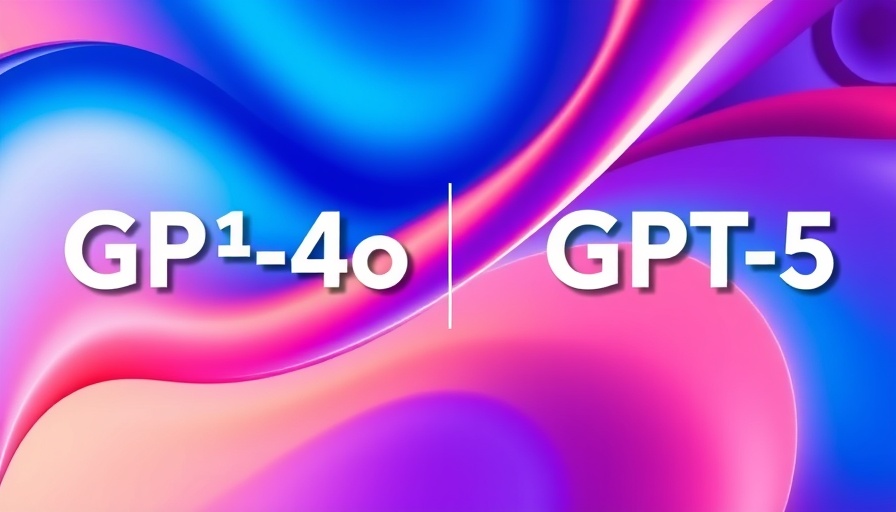
Decoding the GPT Evolution: A Quick Overview
The landscape of generative AI is rapidly transforming, with OpenAI's latest model, GPT-5, now entering the spotlight. But is this new arrival genuinely superior to the beloved GPT-4o? As small and medium-sized businesses venture further into the AI realm, understanding the differences and improvements between these models is essential. Each version brings unique features and capacities that can significantly impact how businesses operate, create, and engage.
Understanding the Basics: GPT-5 vs GPT-4o
Before diving into the nuanced differences, let’s quickly review what each model offers. GPT-4o made waves in the AI community with its impressive capabilities—from text summarization to robust data analysis, leading many businesses to integrate it into their daily operations. Its versatility was indeed a game-changer.
With the launch of GPT-5, OpenAI aims to enhance this foundation. Introduced with upgraded algorithms and richer datasets, the expectation is that GPT-5 not only matches but surpasses GPT-4o in performance and accuracy.
Feature Highlights: What’s New in GPT-5?
OpenAI has incorporated several enhancements in GPT-5, making it a compelling choice for businesses:
- Improved Understanding of Context: GPT-5 offers a more sophisticated grasp of context through seamless engagement in dialogues, facilitating smoother interactions.
- Enhanced Creativity: With improved algorithms, it can generate more creative outputs, allowing businesses to explore unique marketing campaigns and product ideas.
- Better Accuracy: The model’s refined training has increased its accuracy in providing insights, making it more reliable for data analysis tasks.
Task-Specific Comparisons: Who Excels?
Let’s take a closer look at how these two models stack up in specific tasks that matter to small and medium-sized enterprises:
1. Content Creation
When it comes to crafting engaging content, GPT-5 shines with its advanced writing capabilities and ability to better align with brand tone and voice.
2. Image Generation
GPT-5’s enhancements in image generation allow it to produce visuals that are not only aesthetically pleasing but also contextually relevant, which is extremely beneficial for marketing materials.
3. Coding Assistance
Businesses relying on coding will appreciate GPT-5’s refined coding capabilities, enabling quicker resolutions to technical issues.
4. Analysis and Reasoning
GPT-5 also surpasses its predecessor in analytical reasoning, making it invaluable for businesses requiring data-driven insights.
Final Verdict: Should You Upgrade?
The decision to upgrade from GPT-4o to GPT-5 largely depends on individual business needs. While GPT-4o remains a suitable choice for many, the advancements in GPT-5 present compelling reasons for small and medium businesses to consider making the switch. The enhanced features could lead to more innovative strategies and improved operational efficiency, ultimately fostering growth.
Making the Most of AI in Your Business
As you consider integrating these powerful tools, remember that understanding their distinct capabilities can unlock new opportunities in your marketing efforts. Experimenting with AI-generated content and insights can be a game-changer for your business’s digital strategy.
In conclusion, while GPT-4o brought significant improvements to generative AI, GPT-5 marks another leap forward. The choice between them will shape your AI experience, dictating how effectively you harness this technology for your business needs.
Your Call to Action: Take the Leap!
If you’re ready to explore how generative AI can take your business to new heights, consider experimenting with GPT-5. Leverage its enhanced features to generate captivating content, streamline processes, and drive engagement. The future is here—embrace it!
 Add Row
Add Row  Add
Add 



Write A Comment